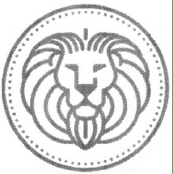ACCORDING TO THE EU GENERAL COURT A LION’S HEAD IS A BANAL AND COMMONPLACE DECORATIVE MOTIF IN THE FASHION SECTOR
The EU General Court, with its decision of 20 December 2023 in the Case T-564/22, annulled a decision of the Fourth Board of Appeal of the EUIPO, that had confirmed the decision of the Opposition Division of the EUIPO, by which the two EU trademarks below (the one on the left being contested by the holder of the earlier registered trademark on the right) were considered confusingly similar and therefore the opposition against the registration of the sign on the left was upheld.
Both EUTMs were registered for precious metals in Class 14 and clothing in Class 25 of Nice Classification.
 |
 |
The General Court upheld the appeal of the applicant of the contested sign, since the lower Courts erred in giving particular prominence to the conceptual similarity in the global assessment of the likelihood of confusion between the signs.
The parties agreed that the dominant element of the marks at issue was the lion’s head, however the parties provided different views on the inherent distinctiveness of such an element.
On the one hand, the opponent (and EUIPO) stressed that such element was distinctive, and the mere stylistic/visual differences were not sufficient to avoid the likelihood of confusion, considering the identity between the signs from a conceptual point of view.
On the other hand, the applicant had persuaded the General Court that – as already stated by the General Court in the judgment of 5 February 2020, Representation of a lion’s head encircled by rings forming a chain, T331/19 – the representation of a lion’s head is a banal and commonplace decorative motif for clothing accessories, such as “buttons”, “cuff links” or “jewelry with lions’ heads on it” and that it is likely to be known by anyone or which may be learnt from generally accessible sources that, in the fashion sector it is a banal or common practice to use representations of lions or lions’ heads or, more generally, of wild, strong and exotic animals in the commercial presentation or the decoration of goods (such as those in Classes 14 and 25).
Therefore, the General Court upheld the appeal and annulled the contested decision of the Board of Appeal stating that:
- “figurative elements which are commonly found in the commercial presentation or the decoration of the goods concerned and which consumers are, consequently, accustomed to seeing in that decorative function will generally have a weak distinctive character with regard to those goods. Consequently, unless the proprietor of an earlier mark which consists of a sign with a low degree of inherent distinctiveness in relation to the goods concerned, because that sign is based on a concept which is commonly used for the commercial presentation or the decoration of those goods, shows that that sign has acquired enhanced distinctiveness as a result of the intensive or extensive use which he or she has made of it, which is not the case here, that proprietor cannot claim excessive protection for that mark, which would be liable, in practice, to give him or her a quasi-monopoly over the commonly used concept on which it is based”; and
- “the representation of a lion’s head is a banal and commonplace decorative motif in the fashion sector, in which consumers are regularly faced with such a motif in the commercial presentation or the decoration of the goods, with the result that that motif has lost its capacity to identify the commercial origin of those goods, it must be held that, even though the marks at issue are conceptually identical, that can be of only limited importance in the global assessment of the likelihood of confusion, since the concept in common to which those marks refer is only weakly distinctive in relation to the goods at issue and can therefore contribute only to a very limited extent towards the function of a mark, which is to identify the origin of those goods and to distinguish them from those with a different origin”;
- the Board of Appeal:
- gave undue importance, in the contested decision, to the conceptual identity between the marks at issue in the context of the global assessment of the likelihood of confusion”;
- attached too much importance to the conceptual identity between the marks at issue, since, first, the choice of the goods at issue is based mainly on their visual aspect and, secondly, the concept represented in the marks at issue, namely a lion’s head, is used in a banal and commonplace way in the commercial presentation or the decoration of goods in the fashion sector;
- erred in finding, in paragraph 41 of the contested decision, that the earlier mark had, in essence, an average degree of inherent distinctiveness in relation to the goods which it covered, since that degree of inherent distinctiveness must be regarded as low.
In the light of the decision at hand, I would point out that a couple of milestones in the assessment of the likelihood of confusion between trademarks has been stressed by the General Court:
- the distinctive character of any sign (word, picture, logo) must be assessed taking into account the point of view of the average consumers of the relevant products/services, considering their sensibility in considering the relevant sign as capable of being a source of origin rather than a common/banal sign regularly used in the relevant sector.
- where the elements of similarity between the signs derive from common components with a low degree of inherent distinctiveness, the impact of such elements of similarity on the global assessment of the likelihood of confusion is itself low.








